EXERCISING IN YOUR 20S

- Experiment with different workouts to find what you enjoy and then do it on a regular basis.
- There is no specific exercise that you should be doing, but whichever type you select make it an important component of your life. The more consistent your physical activity, the better your overall health is likely to be.
- Consider joining a health club or attending classes at a studio. If cost is a conern, consider this fact: Either you pay to stay in shape while you’re young, or you’ll end of spending lots of money over the course of your life dealing with chronic disease and health conditions.
Age: 20s
| ||
Types of Exercise
|
Nutrition
|
Sleep
|
Choose activities you enjoy. When you’re young you can get away with doing high-intensity training most days of the week, but it’s important to make time for flexibility and mobility training as well.
|
At this stage of life, you have a high metabolism, so enjoy it.
|
On highly intense training days it’s important to have a good night’s sleep for optimal recovery.
|
EXERCISING IN YOUR 30S
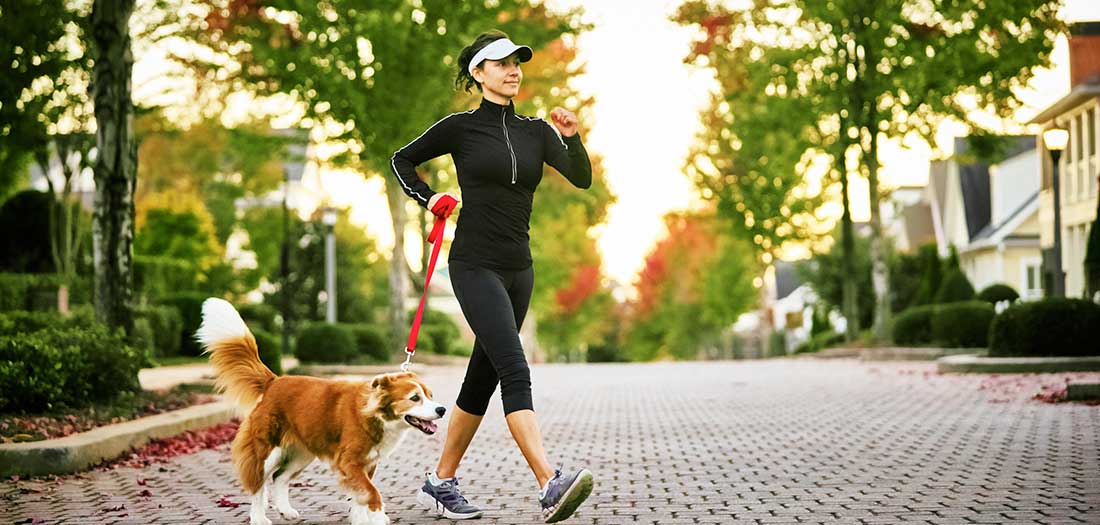
- Without regular exercise, cardiorespiratory efficiency (the ability to efficiently move oxygen around the body) starts to decline, which can increase the risk of developing heart disease.
- If you’re not doing any regular physical activity around the age of 35, you will start to experience a loss of muscle mass.
- Men in their late 30s are likely to experience lower levels of testosterone. When coupled with excessive amounts of abdominal fat, that testosterone could be converted into estradiol, a female sex hormone.
- Strength training to increase muscle mass and metabolic conditioning for weight loss are both extremely important in this time of life. Women in their 30s should also be doing strength training, because it can help elevate levels of human growth hormone, which can help metabolize fat, promote muscle growth and help skin maintain a youthful appearance.
- Exercise is so important during this time that if you haven’t been successful at following a regular exercise program on your own you may want to consider hiring a personal trainer or going to a studio with instructor-led workouts. Working with an ACE Certified Personal Trainer or taking classes with an ACE Certified Group Fitness Instructor can help you identify the best workouts for your needs, as well as hold you accountable for making exercise a priority in your life.
- Even if you have a demanding schedule, it’s important to realize that even 15 to 20 minutes of exercise at a time can make a big difference and provide significant benefits.
- As you progress through your 30s, you will want to make smarter nutrition choices and plan on going to bed earlier because the right diet combined with proper amounts of sleep are essential for good health.
Age: 30s
| ||
Types of Exercise
|
Nutrition
|
Sleep
|
Perform resistance training at least two or three times a week. This could include, for example, strength-training classes at a gym or performing a body-weight circuit from the comfort of your own home.
Perform cardiorespiratory training almost every day. Find an activity that gets your heart rate up and try to do it on a regular basis. If nothing else, try to make time for walking 15 to 20 minutes at a time, three times a day (once in the morning, during lunch and again in the afternoon or evening) for health benefits.
|
As your metabolism changes, it is important to start paying attention to your nutrition choices. If you’re busy, try to budget your time so you can do a weekly meal preparation on Sunday so you have healthy options and won’t be tempted to grab fast food, which, while convenient, is calorically dense.
Follow the USDA guidelines and do your best to eat as many fresh fruits and vegetables as possible while limiting sugary and salty snacks.
|
This is the time of life when sleep starts becoming more important. Our brains repair themselves during sleep, which means that if you’re sleep deprived it could affect your performance at work and keep you from getting that promotion. In addition, the muscle-building hormones of testosterone and growth hormone are produced during the REM cycles of sleep, which is important for when you do your strength-training workouts.
|
EXERCISING IN YOUR 40S
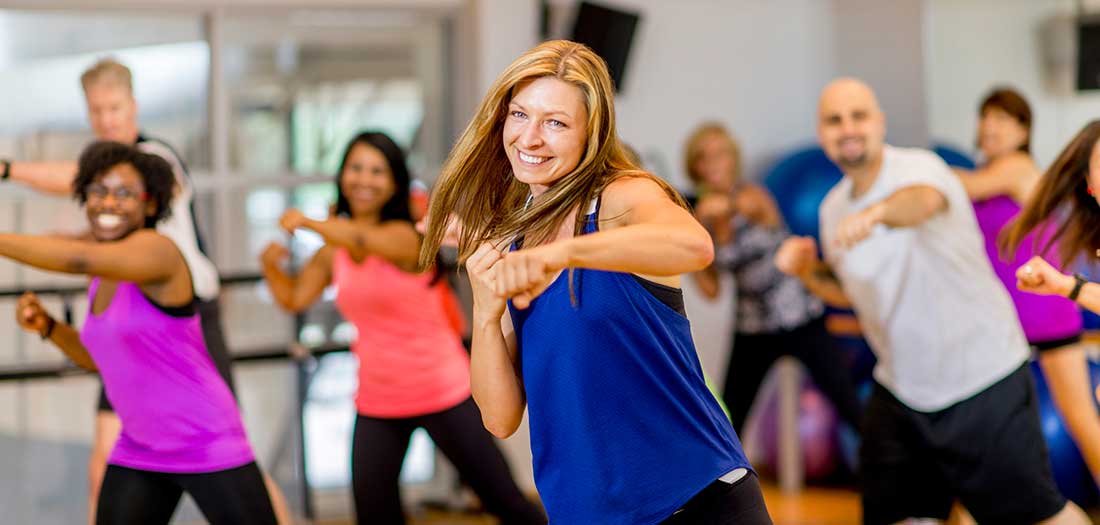
- In this decade, you’re relatively ensconced in your career and family life. While there will be unforeseen challenges, you have, for the most part, established a consistent routine.
- If you find it hard to make time for regular workouts, consider ways that you can add small bouts of exercise to your routine by bike commuting to work or identifying various strategies that can help you increase your daily level of physical activity. Including small activities, such as taking the stairs, using a standing desk at work or walking breaks at work, in your daily habits can help you burn an additional couple of hundred calories a day, which is essential for healthy weight management.
- If you’re exercising regularly, congratulations! However, take time for a critical review of your exercise habits. If you follow the same routine for too long, your body adapts and the exercise, while good, won’t have the same effects.
- If you’re looking for ways to change your routine consider adding yoga, which can help reduce stress levels while improving mobility, both of which can reduce the risk of disease or injury.
- Consider adding at least one high-intensity exercise like a group-cycling, sports-conditioning or kettlebell class to your routine. High-intensity exercise can help promote muscle-building hormones while increasing caloric expenditure, both of which are important at this age. Furthermore, explosive exercises can help improve muscle elasticity, which is reduced during the aging process. Regular strength-training exercises make skeletal muscle tissue strong, but don’t challenge the elastic connective tissue that surrounds it. Adding exercises like kettlebell swings and plyometric jumps helps improve tissue elasticity.
- Keep in mind that while some high-intensity exercise is good, it does take longer to recover. Try to limit it to three or fewer times a week and make sure you are getting plenty of sleep to help promote the recovery process.
Age: 40s
| ||
Types of Exercise
|
Nutrition
|
Sleep
|
Change your exercise habits so you provide fresh stimulus to your body. Continue regular strength training and cardiorespiratory exercise, but consider incorporating some high-intensity exercise to promote tissue elasticity. Yoga can help manage stress and improve your overall flexibility, both of which provide significant health benefits. If you’re not already doing yoga, consider adding it to your routine.
|
This is the age when you really start feeling the effects of unhealthy food choices. The good news is that you are probably earning more money so if you’re having a hard time making smart nutrition choices, you may want to consider subscribing to a service that provides fresh vegetables along with recipes or pre-packaged, proportion-controlled meals.
|
You don’t need me to tell you to get more sleep because this is when you really start feeling the effects of lack of sleep. Review your sleep habits and try to remove light sources like televisions and mobile devices from your bedroom because the light waves can actually wake you up as you are trying to drift off to sleep.
|
EXERCISING IN YOUR 50S
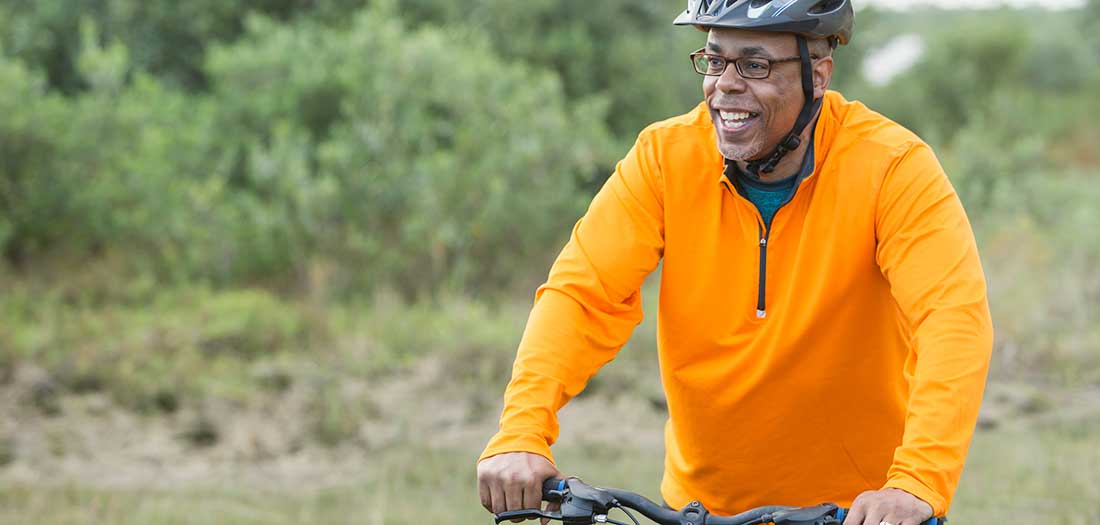
- In this decade of life, varying your exercise routines is important not only to keep your muscles working differently but to engage your brain as well. Make sure to include at least one or two high-intensity workouts a week, because exercise that elevates levels of growth hormone can also elevate levels of brain-derived neurotrophic factor (BDNF). This is the neurotransmitter responsible for producing new brain cells and improving cognitive function.
- Learning new sports or activities can be another way to develop new neural pathways in your brain. If your kids are out of the house and you have more free time, you can use it to learn a new sport or start a new hobby like dancing or martial arts, all of which will provide mental as well as physical development.
- Hopefully, your 50s is also when you will have a little more free time and disposable income to take vacations and visit parts of the world you’ve always wanted to experience. I’ve helped clients in this age bracket train for vacations like hiking to Machu Picchu, cycling across France, kayaking in New Zealand and skiing in Switzerland. If you have the luxury to enjoy these options, then picking active vacations can be one way to help keep you engaged and motivated in your exercise program. Even if you can’t afford exotic destinations you can start cycling and hiking by exploring the parks and trails in your area.
Age: 50s
| ||
Types of Exercise
|
Nutrition
|
Sleep
|
Choose activities that you enjoy and can do on a frequent basis. Make sure to include at least one high-intensity workout a week for optimal neuroendocrine stimulation. This is a great time to pick up a new active hobby like tennis, golf or martial arts because learning new movements stimulates brain development as well as physical development.
|
You’ll have to check with your medical provider on this one. You will want to avoid foods that can elevate cholesterol or affect any medications you may be taking to manage a health condition. If your kids have left the house you can enjoy nice dinners out or, even better, take cooking lessons so you can prepare nice dinners in and enjoy the company of your spouse sans kids.
|
Sleep is important, especially after you exercise. In this decade, you may experience sleep disruptions like waking up in the night or not being to get to sleep in the first place. If that’s the case, make sure to mention this to your healthcare provider.
|
EXERCISING IN YOUR 60S
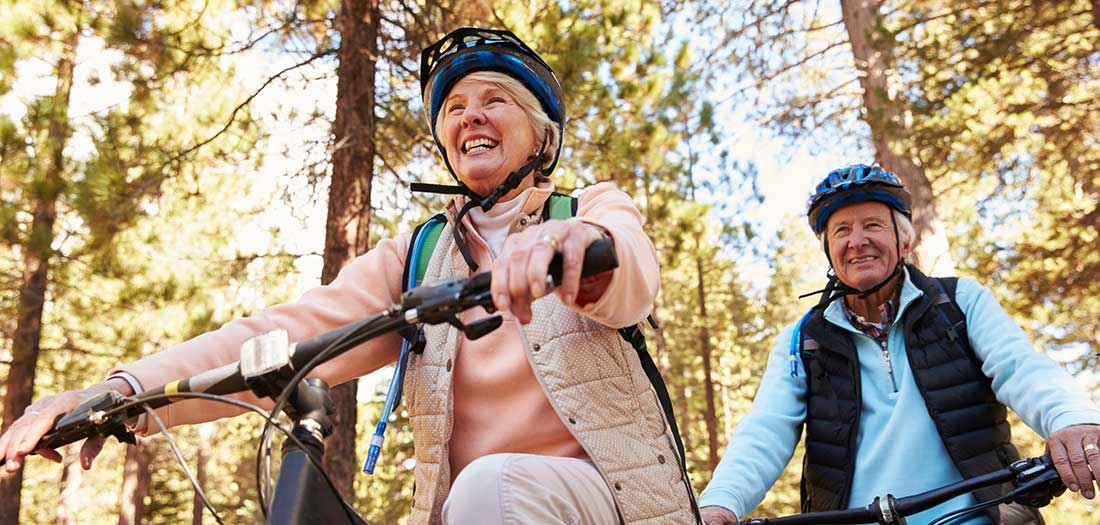
- As someone who teaches workshops on how to be a personal trainer, I’ve noticed that more and more people are choosing fitness as a second career once they retire from their first. If this thought has occurred to you, here’s how to can make that transition and become an ACE Certified Personal Trainer.
- It’s more important than ever to exercise most days of the week. You can continue to do high-intensity workouts, but limit them to two days or less for optimal recovery. If you enjoy resistance training, this may be the time to start using more machines, which make it possible to use heavier weights while minimizing wear and tear on your joints.
- If you do retire during this decade, you will have the extra time for your workouts so continue to experiment with new types of exercises and sports to give your muscles and brain new learning opportunities.
- Just like young adults in their 20s, taking group classes is a great way to combine physical activity with social time and, if you’re recently retired, it can be an effective way to make new friends. Aquatic fitness classes, a healthy choice at any age, are a good option for exercise because they use a lot of muscle mass while reducing stress on your joints. This is especially important if you’re dealing with any arthritis.
Age: 60s
| ||
Types of Exercise
|
Nutrition
|
Sleep
|
Continue to change your workouts on a regular basis to keep using your muscles in different ways. This may be the time to move away from the free weights and start using more weight-training machines, which can allow you to use heavy resistance with minimal stress on your joints. Improve your physical literacy by learning new movement skills, and if there are any activities that you didn’t do in your 60s, don’t wait—now’s the time to get going!
|
If you go through a major life change such as retirement and you find yourself with extra time, make sure you avoid mindless snacking. If you know you’re a muncher while puttering around the house, be sure to have plenty of healthy options and leave the sugary stuff on the grocery store shelves.
|
While it is important in every phase of life, sleep now becomes essential for maintaining optimal health. You may want to invest in your sleep hygiene with a new mattress.
|
EXERCISING IN YOUR 70S
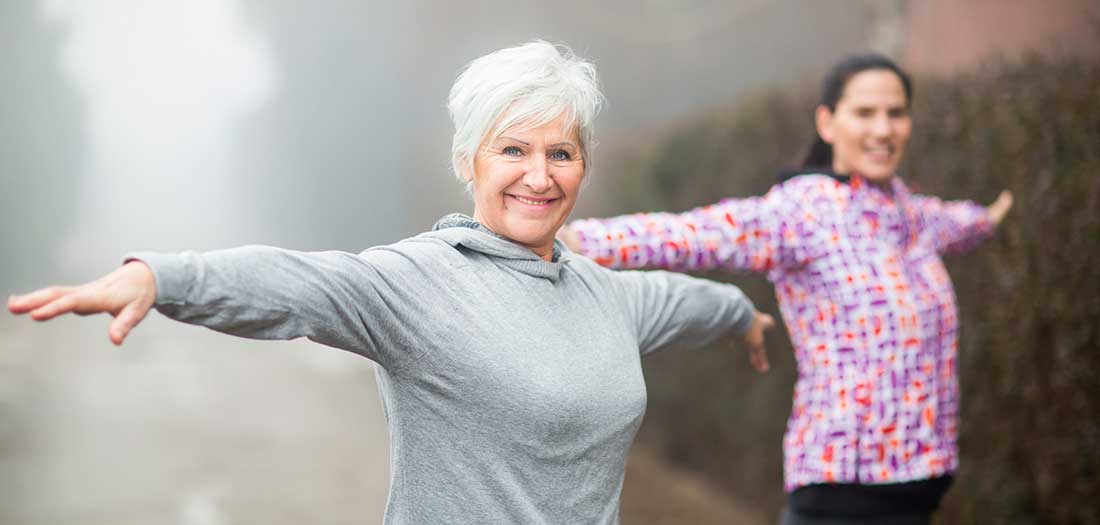
- Do not let the number slow you down. Continue to participate in your favorite activities, but be smart about it by listening to your body and not forcing it to do any extremely uncomfortable exercise.
- If you’ve been a sporadic exerciser up to this point, consider this: Staying fit and strong now can help you maintain your functional independence longer and keep you from having to rely on assisted living.
- Resistance training is completely appropriate and can help increase lean muscle mass and improve your functional strength for activities of daily living.
- If you feel the effects of arthritis, don’t let it stop you from cardiorespiratory exercise, but do look for types that can reduce impact on your joints.
- Activities that require you to move your body in all directions, such as tai chi, dance or yoga, are more important than ever for helping maintain balance and reducing the risk of orthopedic injuries.
Age: 70s
| ||
Types of Exercise
|
Nutrition
|
Sleep
|
Strength training, especially on machines, can help enhance quality of life. Exercises that focus on multiplanar movements can help improve integrity of your myofascial system, leaving you with more youthful muscles and connective tissue that is more resilient against injury.
|
Keep making healthy choices. If you notice that your metabolism has started to slow down, reduce your caloric intake and watch what you eat so you can maintain a healthy body weight.
|
If you experience any disruptions of your nightly sleep habits, mention it to your healthcare provider to identify a solution. The good news is that now you’ll probably have the time for afternoon naps, so feel free to indulge, especially if it gives you the energy to participate in your favorite activities.
|
EXERCISING IN YOUR 80S

- Resistance training becomes extremely important because it can help you maintain your strength, allowing you to remain functionally independent. Strength-training machines are the safest, most effective way to receive this benefit.
- If you are considering relocating to a retirement community, look for one with a robust schedule of recreational activities so you have plenty of options for exercise.
- You are never to old to learn new things, so consider going back to school. Social interactions and learning are both great ways to reduce the risk of developing cognitive diseases like dementia or Alzheimer’s.
- You can continue to participate in your favorite activities but respect your age and try not to push your body beyond its existing limits.
Age: 80s
| ||
Types of Exercise
|
Nutrition
|
Sleep
|
Do any physical activity you enjoy and do it as often as possible. Continue to seek out new activities because learning new movement skills helps your brain as well as your body. If you’re considering moving to an older-adult community, look for one with many recreational activities.
|
Continue to seek and follow the advice of your healthcare provider for the best options given your current health status. Continue to avoid excessive drinking and calorically dense, low-nutrition foods. But then again, you’ve already beat the odds so enjoy yourself but be smart about it.
|
By now you know the importance of a good night’s sleep. Make sure to communicate any disruptions in your sleep patterns to your healthcare provider immediately.
|










